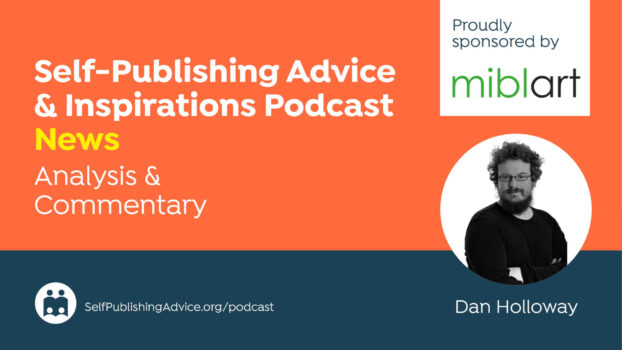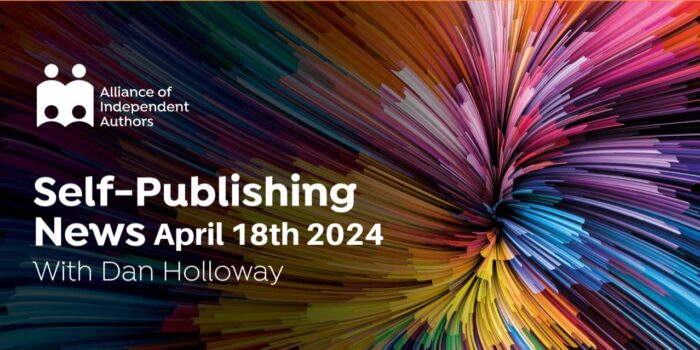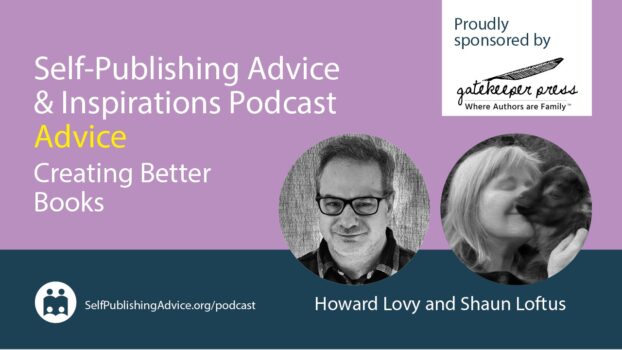Believe it or not, Independent Publishing has been around a long, long time. And although for a length of time it was considered to be the most horrible road an author could take to get their works into the world, many, many authors have done it with success.
Just let me name a few authors that were my inspiration to self-publish: Carl Weber (who now owns and operates his own publishing company and line of book stores), Earl Sewell (who is currently with a traditional publisher), KL Brady (who self-published then got picked up by traditional publisher) and lastly, LA Banks (who was a traditionally published author who self-published her YA book).
The above weren’t the only ones to inspire me. I grew up in Washington DC where the arts and entrepreneur spirit go hand in hand. As a reader and an urban teen who thirsted for books that spoke to my life, I hungered for self-published books produced by authors in my local area. I still have books I’ve purchased by the authors themselves from vendors in downtown DC and at surrounding colleges like Howard University, Bowie State University and Maryland University.
HOW DID SELF-PUBLISHERS IN THE PAST BECOME LEGIT?
In the past, in order for a small publisher or self-publisher to make it in the sales game the easiest road to entry was to (1) Create a publishing company (whether you desire to take on other authors or not) (2) Find a distributor (check John Kremer’s page for them: http://www.bookmarket.com/distributors.htm) to get books into stores, libraries and listed with major distribution companies (3) Add a few authors (4) Beg for reviews. (5) Find your niche market and promote to it. This method worked for my publishing company that I co-own with my husband. Lucky for me, my husband’s sales background and determination to get my books out there pushed me farther than I’d ever thought possible. In 2 years I went from a nobody engineer to an AUTHOR who had her books and over 40 bookstores and 20 libraries or more. He cold called book stores, visited stores/libraries in person, he represented our publishing company at trade shows and followed up with every lead. But if we weren’t with a distribution company that supported our efforts the road would’ve been harder.
Distribution
If you didn’t have a distributor, the cheapest way to entry was to set up a Print-On-Demand account with both Lightening Source AND Createaspace. Then you would have to send your actual print copy of your book, your marketing plan, media kit, and supporting materials directly to the book sellers to get placed in their system. As for Libraries, you had get an LCCN then mail their main office to try to get them to allow your books to be ordered.
Another tidbit about distribution, would be exposure. It allowed your books to be priced much lower than Print-On-Demand (POD) options of the time. In addition using a distributor allowed many small press or self-publishers to offer discounts to book resellers, immediate shipping, and be able to compete with large publishers on pricing.
PRINT ON DEMAND wasn’t a good option
Before the technology of POD improved, a 275 page book would cost the reader between $18 and $20. Whereas, if a small press or self-publisher purchased the printed books in advance (either as Digital or Offset print runs) they would be able to have more competitive prices and better quality books, but they'd have to put up about $1500 to $2000 for about 500-800 books for an initial print run. There was no way a self published author or small press could actually entice a reader to purchase a book the cost of a POD produced book that cost about 40% more than similar books.
The barrier to entry to get your books to consumer was the access to bookstores and premium placement within those stores. Organizations such as Independent Book Publishers Association and Combined Book Exhibit popped up to help push those independent publishers in front of booksellers.
Marketing of then
Indie publishers of the past had to really take the time to learn their markets. Market penetration had to be on a personal level which means doing tours. Since getting books into bookstores was difficult, many would pay money to rent tables at book festivals, try for speaking gigs, work hard to be literally ‘face to face’ with prospective readers.
Roadblocks and the ‘Self-publishing’ dirty word
I have several letters and emails from various reviewers that refused to even peek at my books because I was considered ‘self-published’. My husband addressed each one of them personally stating that ‘We are a small business like any other. Give our product a try before you decide you don’t like it.’ When he responded too many of them they would give my books a shot and some would review and support our small business. Others were rather adamant about their prejudice of self-published works.
THE WOW OF NOW
Ebooks made things so much easier! Cheaper! And opened doors for many more to sell their books direct to customer. It knocked out the middle man.
Therefore, now a self-publisher or small press, can basically release their ebook cheaply, send out eARCs (ebook Advance Reader Copies) to reviewers, and distribute their books themselves reaching a MUCH larger audience than just the chain bookstores. AND the cost of returns are much less!
In addition the major cost of printing a book, mailing out hardcopies, and paying for returns/storage/postage is virtually gone. A small press can get their books out with minimum cost and effort compared to print productions. Also, they can wait and release the print copy in order to prolong the life of the book. And they can reproduce that media in so many different slices. Not to mention the wealth of growth of the SHORT STORY market that allows for another reproduction of 1 story idea with much less investment from the publisher.
Print On Demand Improved
POD quality has improved by leaps and bounds which allows new Independent publishers the opportunity to save on the upfront cost of offering paperback book options to their format list. Now a POD book can have a competitive cost to it’s former Offset and Digital print rivals.
Marketing via the internet direct to reader
Now with the reader population opening up to reading online materials, it’s much, much easier to find your book’s market, and you don’t have to leave home to find it. Now, much more than ever, data on readers and where they hang out is more readily available. Touring now via Skype, author blog, virtual fairs and tours, offer the opportunity for a limited budget author to market directly to readers from the comforts of home. Why? Because those same readers can instantly ‘click’ purchase directly after or during the virtual interaction. This means the need to spend large amounts of money touring the country, fighting to get into bookstores and libraries is no longer needed to have successful sales numbers.
NaySayers
They are still around. However, the overall quality of Independent and Self-published books are getting much, much better do to authors starting to consider self-publishing as a viable option for their career. Therefore, they desire to put their best foot forward since they are branding themselves, instead of expecting a publisher to do it.
ONLY GETTING BETTER for the LITTLE GUY
I don’t believe that the large publishing companies will ever go away. However, I believe that large, small, traditional, indie and self-publishers will find a proper place in this sea of sales and products. Authors are getting a lot smarter about the ‘business’ of writing. And the days of writing books and sitting back while someone else promotes you as an author is long gone.
I can honestly say that my sales have quadrupled from the Indie Publishing on THEN to the WOW of now. I still do things a bit like I used to, but with a new spin to build my ebook market and I must say, it’s way easier to do than it was before.*********************************************************************************
 LM Preston is co-owner of Phenomenal One Press, Vice President at MBPA, Conference Coordinator at Maryland Writer's Association who recruits Lit Agents and Editors for conferences, and is a moderator at YAlitchat.org which is an online writing community. In addition she has penned over 5 published novels in Middle Grade and Young Adult Fiction. She's taught at University of Maryland, University College in technical related studies.
LM Preston is co-owner of Phenomenal One Press, Vice President at MBPA, Conference Coordinator at Maryland Writer's Association who recruits Lit Agents and Editors for conferences, and is a moderator at YAlitchat.org which is an online writing community. In addition she has penned over 5 published novels in Middle Grade and Young Adult Fiction. She's taught at University of Maryland, University College in technical related studies.
a Rafflecopter giveaway
 LM Preston is co-owner of Phenomenal One Press, Vice President at MBPA, Conference Coordinator at Maryland Writer's Association who recruits Lit Agents and Editors for conferences, and is a moderator at YAlitchat.org which is an online writing community. In addition she has penned over 5 published novels in Middle Grade and Young Adult Fiction. She's taught at University of Maryland, University College in technical related studies.
LM Preston is co-owner of Phenomenal One Press, Vice President at MBPA, Conference Coordinator at Maryland Writer's Association who recruits Lit Agents and Editors for conferences, and is a moderator at YAlitchat.org which is an online writing community. In addition she has penned over 5 published novels in Middle Grade and Young Adult Fiction. She's taught at University of Maryland, University College in technical related studies.



I have seen this blog, Thanks for sharing Self-publishing information.
Corflute Signs
This comment has been removed by the author.
Awesome Historywriter. Karla is amazing isn’t she?
Karla has been a role model for me. Thanks for this post.
Lightening Source has been preferred by many other small press and even traditional. Createspace is decent also. You can use both.
WOW is right! Thank you for sharing this history with us:)
Thanks, for the read! Loved reading about the evolution 🙂
Thank you for the well written journey.
I have seen some discussion about POD options and was wondering if you had any interaction with Lightning Source and/or Createspace and what you thought about them as options for indies.
You’re welcomed to share my school of hard knocks 😀
Thanks so much for telling us the history of self publishing!